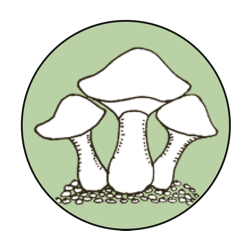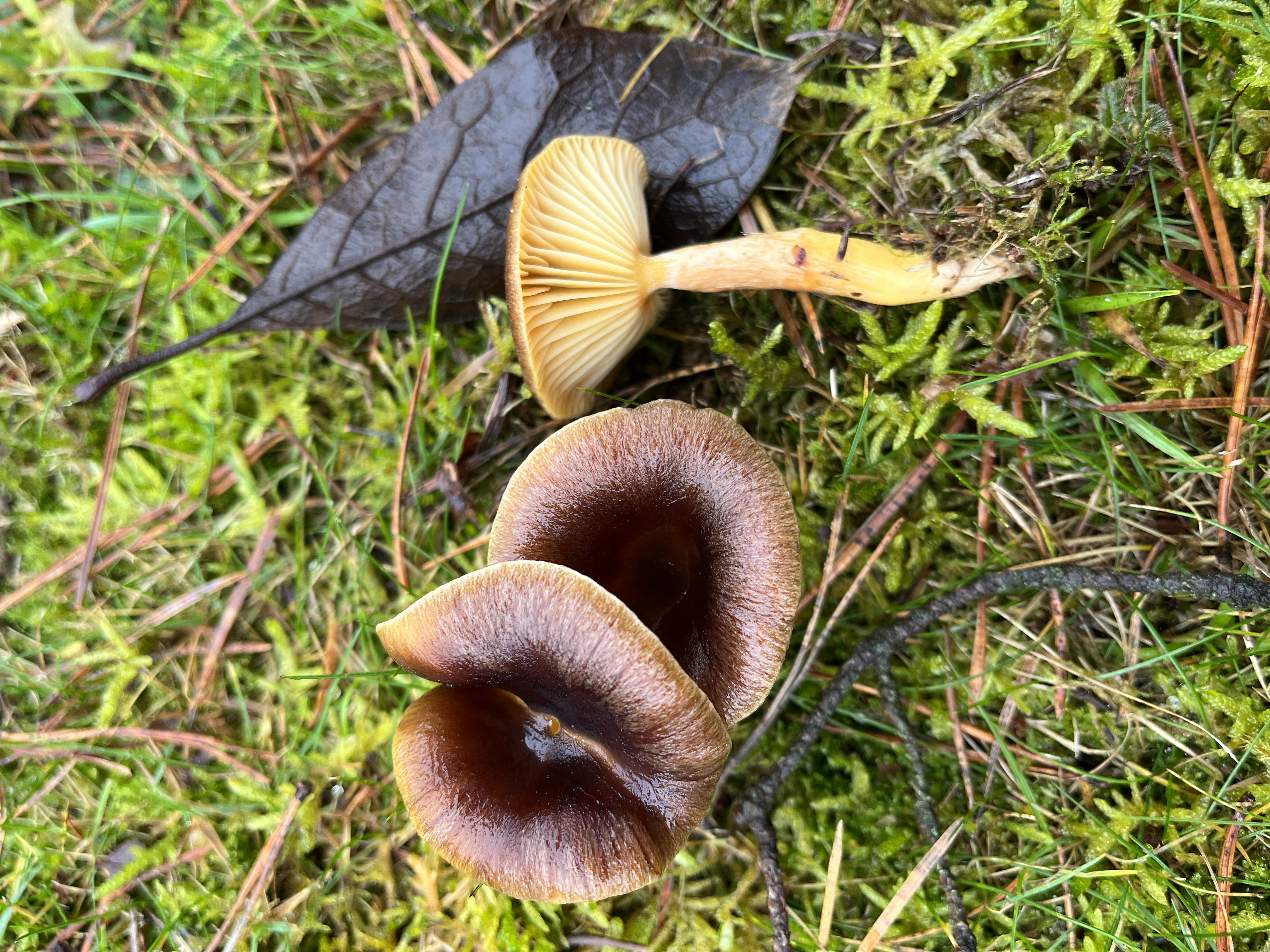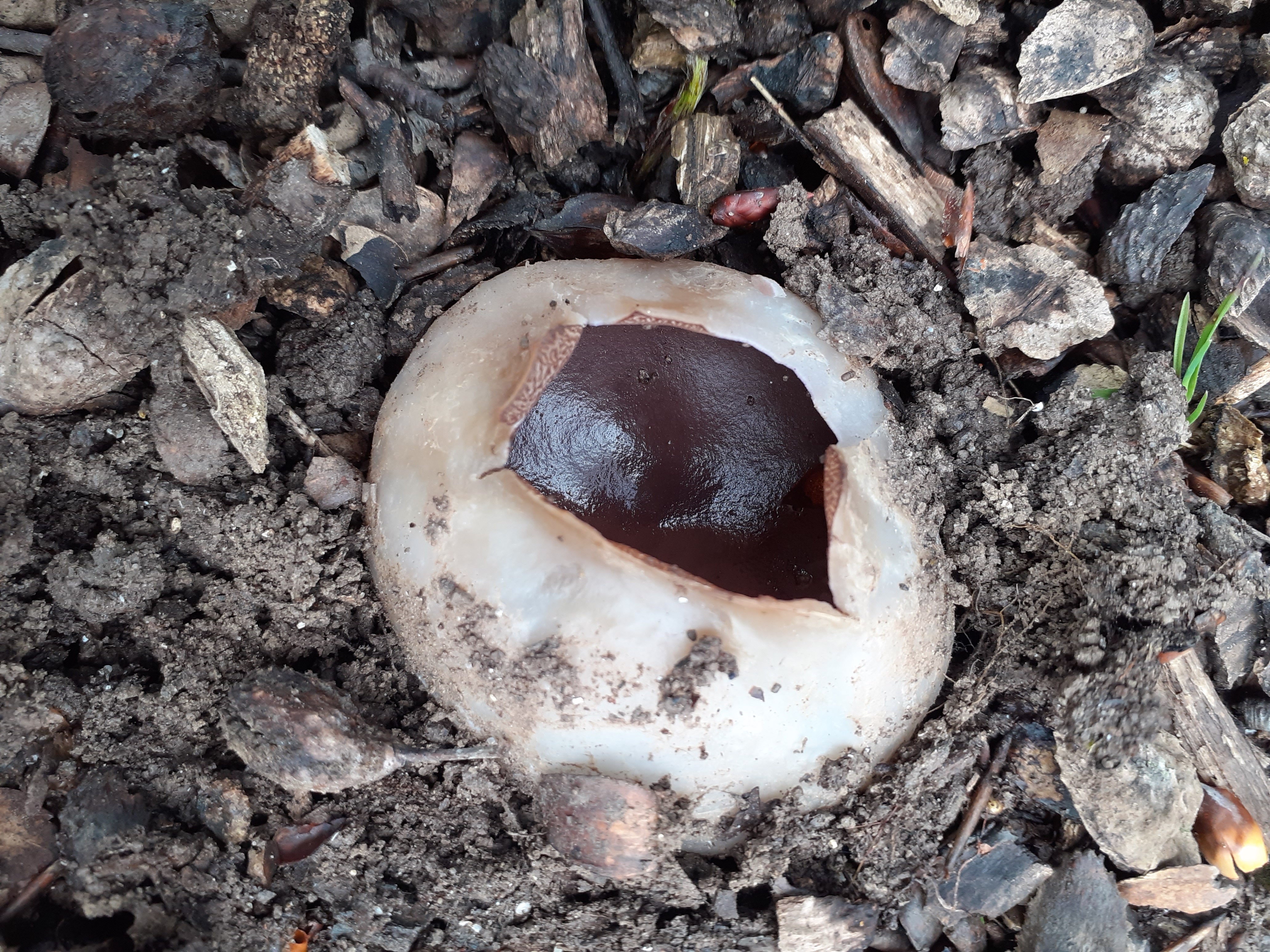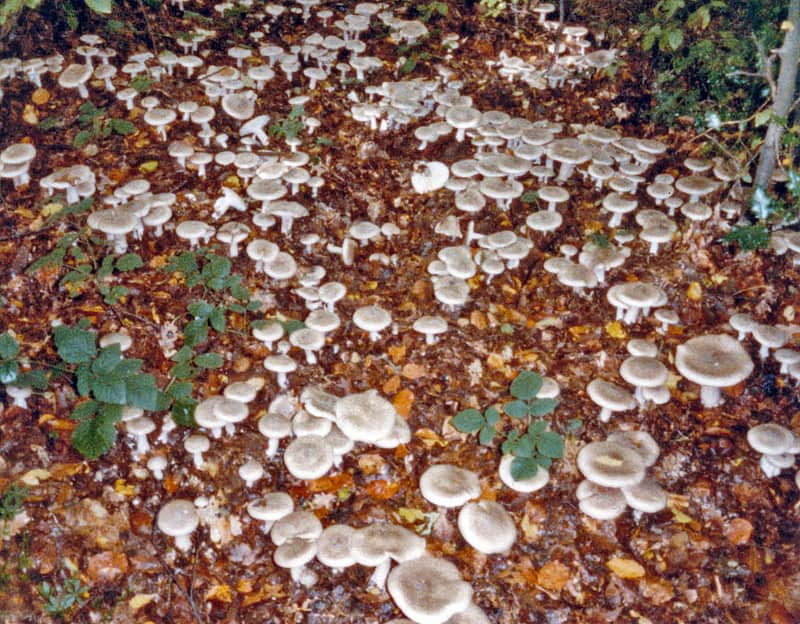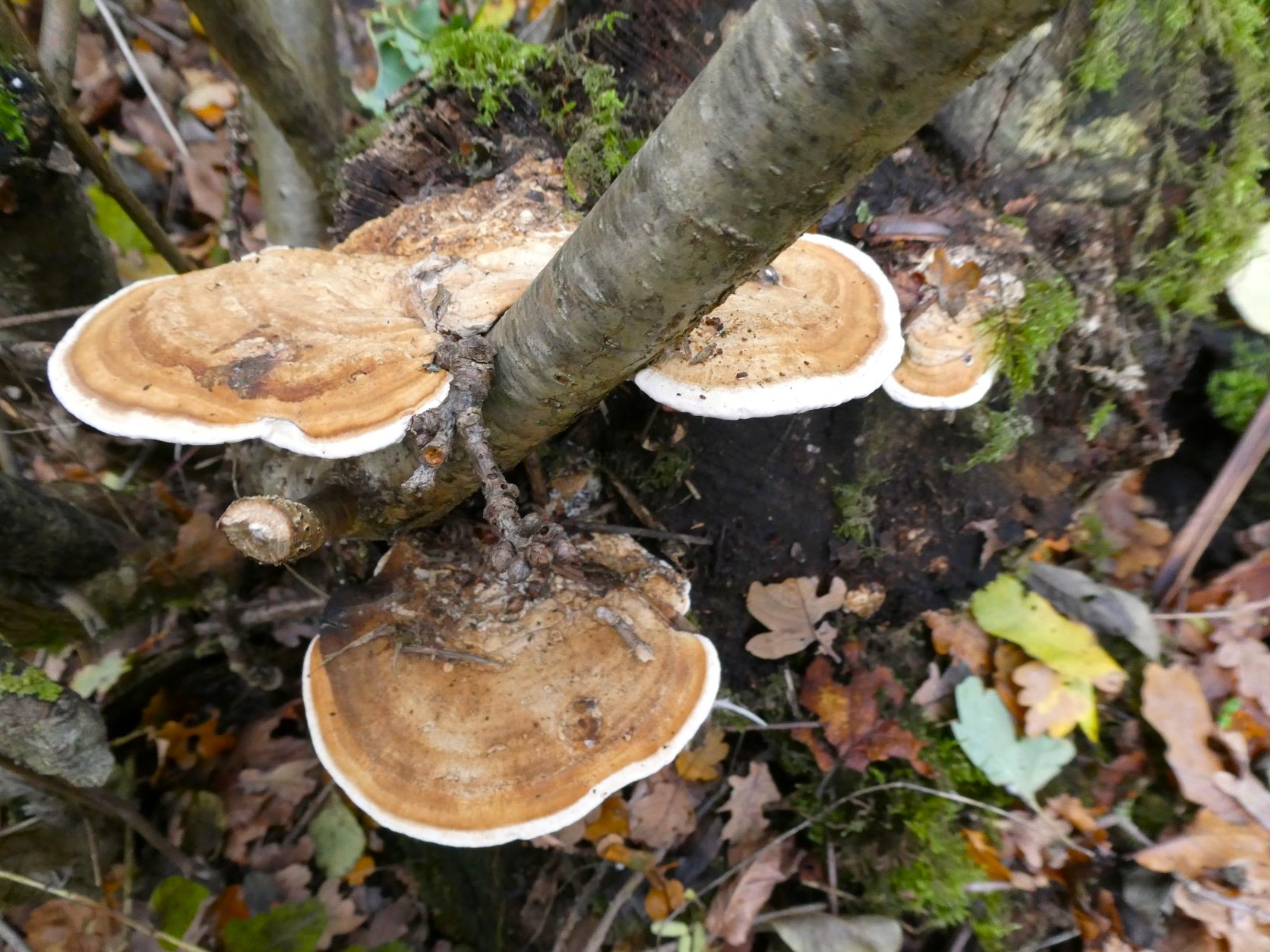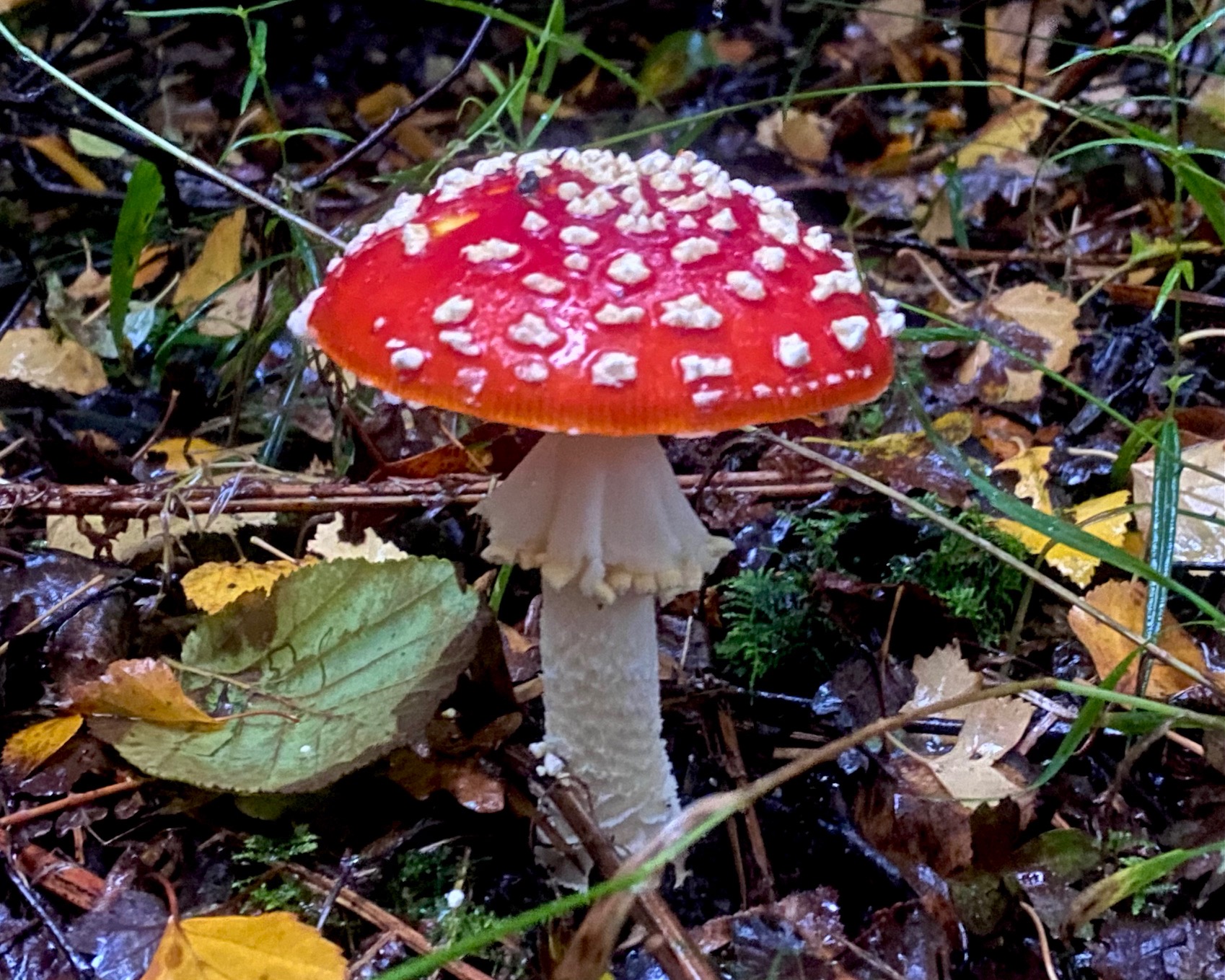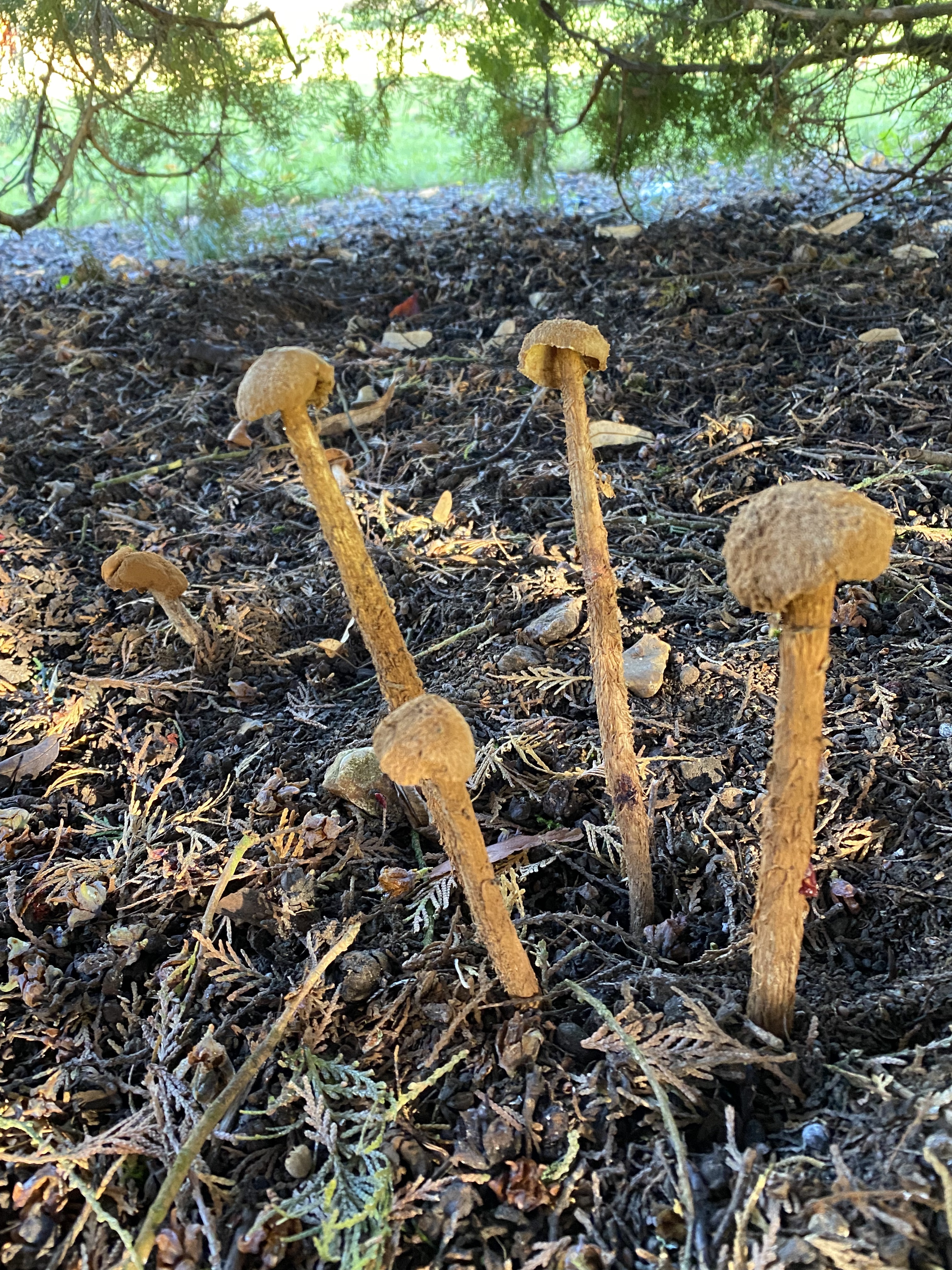We were very lucky with the weather on 23 September. The morning was warm and dry while we were foraying, and we were able to make it back into the village hall with our specimens and sandwiches before the rain started pounding dramatically on the roof of the hall. The woods were pleasant with some magnificent old sweet chestnut trees.. And thanks to the sharp eyes of the 14 of us, we found a surprising number of fungi, including lots of russulas (Russula atropurpurea – Purple Brittlegill – being particularly abundant) and boletes.
Back in the village hall, our tutor, Geoffrey Kibby, explained a few of the recent name changes, in particular the recent splitting of the genus Boletus into several new genera, and the many scientific names for Rooting Shank, known to most of us as Xerula or Oudemansiella radicata. We compared our specimens of Russula atropurpurea to note the range of colours it can adopt. Geoffrey also alerted us to a potential problem In describing spore colour, which is a useful character for russulas; he showed us 2 samples, one where the spores were lying as they had fallen ie. quite thinly spread out on a slide, and the other with the same spores but scraped together into a pile, with a coverslip over them. The colour difference was dramatic. He also suggested using a colour chart such as the British Fungus Flora Colour Identification Chart to provide a little more objectivity into describing colours.
It was very useful to see several similar fungi together, to compare them – eg. Russula fellea and R. ochroleuca, and Russula langei, ionochlora and parazurea. Some authors think it is an extreme form of Russula cyanoxantha (The Charcoal Burner) but it has a different reaction with a ferrous sulphate crystal (goes green).
All in all, a most enjoyable and informative day; many thanks to Geoffrey for leading it, and Margaret and Steve for getting it all organised.
Pat
Recent Posts
